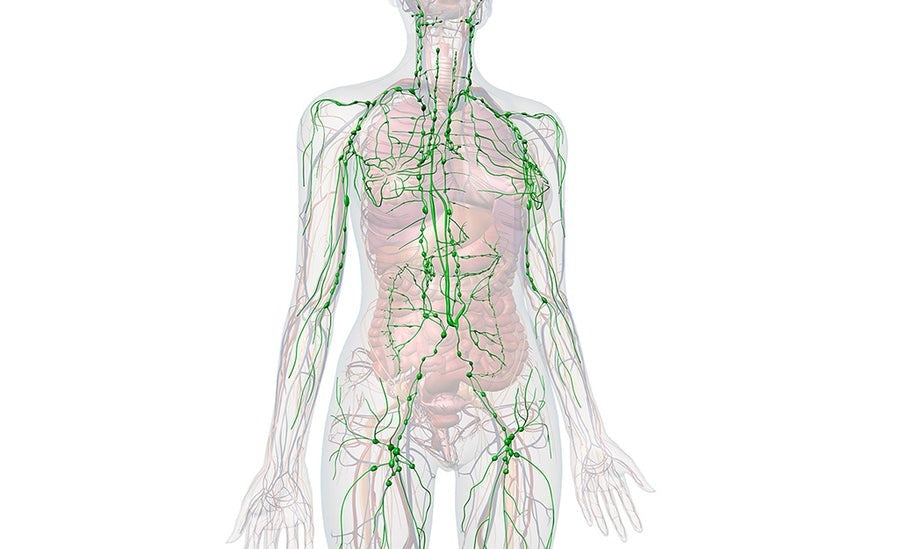Yoga for Fertility
Just as we prepare the soil to be as fertile as possible before we sow the seeds, we also want to prepare our own body and mind for pregnancy. Nurturing body and mind is vital to creating the most ideal environment within.
Yoga can be a wonderful tool to include in your preconception plan to boost fertility and optimise the chances of conceiving. In times of infertility, supporting the nervous system and reducing stress become imperative as the journey to conception can be a time of emotional upheaval that, in itself, impacts the couples' fertility.
As the endocrine system is very sensitive to stress, the main focus of fertility yoga is to manage and reduce a woman’s stress levels. Restorative yoga is especially effective in reducing stress and helps to release stress and tension in the body and mind.
The yoga asanas that we bring into fertility yoga specifically focus on releasing tension in the hips, lower back and pelvis to facilitate a flow of energy and blood circulation to the reproductive organs. It's all about creating space and softness around the lower belly and developing increased awareness and connection to the womb space.
Embracing a feminine approach to yoga and tuning into the different phases of your menstrual cycle help to ensure that your body is given the time, space and rest needed for nourishment and entering a fertile state.
Benefits of Yoga for Fertility
Reduced emotional stress
Many couples struggling with infertility often experience high levels of stress which we know can greatly impact our hormonal function. Having the support and resources to be able to release stress and calm the nervous system is an essential part of improving fertility and the chances of conceiving.
Yoga has been found to reduce stress in both men and women which in turn reduces the stress response and the release of cortisol, leading to better reproductive function. A regular yoga, breathing and mindfulness practice may, therefore, indirectly help to restore the balance of the endocrine system.
Stress may also impact on libido and sexual activity, which, of course, are essential factors when trying to conceive.
Promote circulation to the reproductive organs
Yoga for fertility focuses on those postures that promote blood circulation as well as energy to the lower abdominal area in order to nourish the reproductive organs and glands. A larger supply of nutrient and oxygen-rich blood to the ovaries, uterus and fallopian tubes helps support their optimum health and function which, of course, is essential when trying to conceive.
Support detoxification
The pelvic region is highly concentrated in lymph tissue. Our lymphatic system is responsible for transporting toxins, fluids, hormones and other unwanted material to be filtered and eliminated. If the lymph becomes stagnant, toxins accumulate and this may further contribute to inflammation. Yoga poses that relax the muscles around the pelvis, lower back, hips and groin, help improve the flow of lymph and support the detoxification process. Consequently, this creates a healthier environment for the reproductive organs.
Create a space to understand and process thoughts & emotions
Dealing with infertility brings about many thoughts and emotions that, which adds extra stress to the body which may impact on the chances of conceiving. Thoughts can easily trigger a stress response and give rise to negative emotions and anxiety around our fertility.
A regular fertility yoga practice aims to create a safe space for any thoughts, emotions and feelings to be present. Learning to observe, without judgment, may help you better understand and cope with any feelings that may arise during this time, both for you and your partner.
Implementing a positive affirmation into your yoga practice is another effective tool to shift your mindset in a more positive direction and therefore support your fertility. A positive affirmation can be anything that resonates with you at this moment in your life.
“I am fertile.” “I am healthy, whole and full of love.”
Yoga Asanas for improved fertility
Here follows a sequence of eight Yoga Asanas that will help to boost your fertility and enhance your chances of getting pregnant.

1. Pelvic floor awareness & deep breathing
Focus: Lie down on your back with the soles of your feet connected to the ground. Place your hands over your lower belly. Invite the breath into your lower belly and become aware of your womb-space. Watch the rise and fall of the breath and allow each breath to nourish the tissues of the lower belly and pelvis.
Benefits: Rejuvenates the body and mind and improves awareness and energy flow to the pelvic tissues. Releases the psoas muscle which creates more space in the pelvic region and relaxes the lower back, which is very nourishing for the nervous system.
Stay for 5 - 10 mins with eyes closed, breathing deeply into the belly and allowing the whole body to relax back into the support of the earth beneath you.

2. Baddha Konasana
Focus: Sit on the ground or maybe on a folded blanket. Gently ease into the pose by moving your upper body over your legs, with a gentle rounding of the spine. Breathe into your hips and the whole pelvic area, then soften and let go of struggle and control.
Benefits: Relaxes and frees up energy in the pelvic area, improving circulation to the reproductive organs. Can help to alleviate menstrual cramps and heavy bleeding.
Stay for 5 minutes

Focus: Use a pillow or bolder under your forehead to support your head. Connect your hands and feet to the ground. Feel the spine lengthening and releasing tightness in the upper and lower back. Create space in the chest and work your hips up and back away from the hands. Keep the knees bent if it’s too strong on the hamstrings.
Benefits: This is a partial inversion so it brings fresh blood to the head, nourishing the pineal and pituitary glands and regulating the hormonal system. Creates space in the spine, opening the channel between the heart and the uterus.
Stay for 5-10 deep breaths.

4. Malasana
Focus: Take support from a block if you struggle to keep your heels on the ground. Channel your breath and attention towards the pelvis. As you inhale draw prana (energy) up from the earth into the womb-space, expanding the pelvic floor. As you exhale breathe the energy down into the ground, gently contracting the pelvic floor muscles.
Benefits: Creates space in the pelvic area and increases blood and energy circulation. Releases lower back, stimulates digestion and grounds the energy.
Start with 30 seconds and build up to a couple of minutes.

5. Balasana
Focus: Rest with your knees separated, big toes to touch and the upper body supported on the pillow. Channel the breath into the back of the pelvis and the sacrum, circulating energy into the sacral centre to create a receptive space in the womb.
Benefits: Releases lower back, calms the mind and nervous system and gently stretches the hips. Allows us to draw the energy and attention inwards to find emotional support and mental strength.
Stay for 5 minutes

6. Reclining Twist
Focus: Lie down on your back and bring the knees to the chest, lowering down to one side and creating a twist from the waist. Lengthen the spine as you inhale, relax as you exhale.
Benefits: Releases tension along the spinal muscles and the lower and upper back. Gently massages and stimulates the digestive and reproductive organs. Brings balance to the body and mind.
Stay for 2-4 minutes on each side.

7. Supta Baddha Konasana
Focus: Rest with your back over the bolster and support the knees if needed, so you can completely relax the inner thighs, belly and pelvic floor area. An eye pillow can help to draw in even more to find an internal connection.
Benefits: Opens the heart-space and improves the heart-womb connection. Increases flow of energy and blood into the pelvic area. Helps to relieve anxiety, mild depression and stress. Supports the downward movement of energy which is very grounding and releasing.
Stay for 5-10 minutes

Focus: You can rest your hips on a block, bolster or just on the floor supported by a wall. Also, use an eye pillow here to draw in. Allow your legs, chest, and belly to soften. Breathe into the belly, focusing particularly on lengthening the exhalations to calm the nervous system.
Benefits: Stimulates blood and energy flow to the parts of your body that need them. Calms the nervous system, strengthens the immune system, balances the hormonal system and improves the digestive system. Helps to remove toxins from the bloodstream by supporting the lymphatic flow. Perfect to do in the evening to help with insomnia and restless legs.
Stay for 10-15 minutes.
These yoga asanas can be practised on a daily basis to enhance your chances of getting pregnant. It is also a wonderful sequence for all women to practice in their luteal and menstrual phase to help relieve stress, tension and PMS symptoms.
Summary
While the journey to conceiving often requires a holistic approach and the help of a fertility specialist or practitioner, tools like Fertility Yoga can be really helpful in better managing the overwhelm of stress and emotions that often arises with these challenges. Beginning a yoga practice as a part of the preconception plan may even further improve chances of conceiving and promoting overall benefits for your endocrine health and wellbeing.
REFERENCES:
Wesselink et al. (2018). Perceived Stress and Fecundability: A Preconception Cohort Study of North American Couples. American Journal of Epidemiology, 187(12); 2662–2671.
https://doi.org/10.1093/aje/kwy186
Clifton et al. (2020). An internet-based mind/body intervention to mitigate distress in women experiencing infertility: A randomized pilot trial. PloS one, 15(3), e0229379.
https://doi.org/10.1371/journal.pone.0229379
Domar, A. D., Seibel, M. M., & Benson, H. (1990). The mind/body program for infertility: a new behavioral treatment approach for women with infertility. Fertility and sterility, 53(2), 246–249.
https://doi.org/10.1016/s0015-0282(16)53275-0
Dumbala et al. (2020). Effect of Yoga on Psychological Distress among Women Receiving Treatment for Infertility. International journal of yoga, 13(2), 115–119.
https://doi.org/10.4103/ijoy.IJOY_34_19
Gaitzsch, H., Benard, J., Hugon-Rodin, J., Benzakour, L., & Streuli, I. (2020). The effect of mind-body interventions on psychological and pregnancy outcomes in infertile women: a systematic review. Archives of women's mental health, 23(4), 479–491.
https://doi.org/10.1007/s00737-019-01009-8
Lynch et al. (2014). Preconception stress increases the risk of infertility: results from a couple-based prospective cohort study--the LIFE study. Human reproduction (Oxford, England), 29(5), 1067–1075.
https://doi.org/10.1093/humrep/deu032
Nalgirkar, S. P., Vinchurkar, S. A., Saoji, A. A., & Mohanty, S. (2018). Yoga as a Therapeutic Intervention in the Management of Dysfunctional Uterine Bleeding: A Controlled Pilot Study. Journal of mid-life health, 9(1), 8–13.
https://doi.org/10.4103/jmh.JMH_76_17
Rooney, K. L., & Domar, A. D. (2018). The relationship between stress and infertility. Dialogues in clinical neuroscience, 20(1), 41–47.
https://doi.org/10.31887/DCNS.2018.20.1/klrooney






















